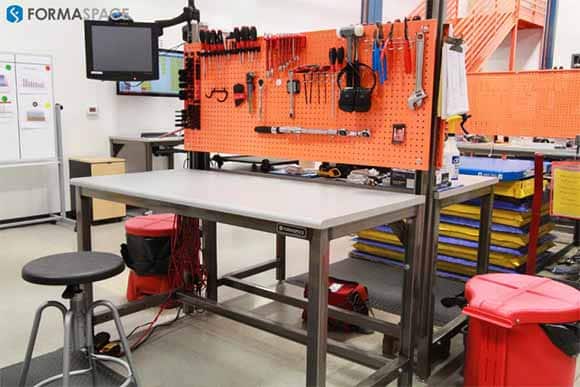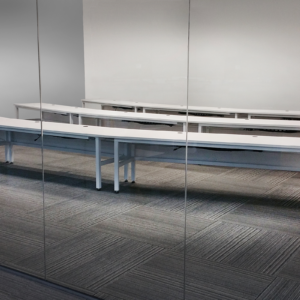When it comes to conducting workplace safety training programs, are you looking for new ways to get your workers to become more motivated, engaged, and most importantly — proactive — when it comes to safety?
Do you find it challenging to lead new employee through your safety training onboarding process? And do you question whether they have really absorbed and mastered critical standard operating procedures (SOPs)?
You are not alone.
But there is an emerging new trend in safety training — one that leverages the rapid advances in consumer games technology.
Savvy companies are discovering the value of using immersive game technologies — such as augmented reality (AR) and virtual reality (VR) — to build effective teaching tools that allow workers to learn first-hand about the real-world consequences of not following best safety practices.
As we’ll see in the examples below, industrial AR and VR-based industrial safety training programs allow companies to put their workers in potentially dangerous simulated real-world environments — ones that would be too risky and/or expensive in real life* — while providing a sophisticated means to accurately assess whether employees taking part have taken the safety lessons to heart.
Top Advantages of using AR and VR Applications in Employee Safety Training
| More Engaging Than Traditional Training: Interactive sessions provide higher levels of employee engagement and learning retention than reading safety manuals, or passively listening to PowerPoint lectures. |
| Ability to Assess Individual Learning: Interactive training offers the opportunity to assess learning comprehension levels of individual employees at each stage of training |
| Safe Simulations for Dangerous Situations: Ability to create realistic training scenarios that would be expensive and/or dangerous to recreate in real life |
| Lower Operating Costs: Training sessions can be designed to run on demand for as few as one participant (without a live instructor) reducing costs for employee on-boarding, etc. |
| Reduced Travel Costs: Employees working at multiple sites can participate in a joint session without having to travel to a central location. |
https://www.youtube.com/watch?v=lKybAxJAorQ
*A good example of a VR-based safety training is this interactive scenario that provides aircraft tug operator trainees “real-world, on-the-job skills” without risking damage to multi-million dollar passenger aircraft.

What’s the Difference Between Augmented Reality (AR) and Virtual Reality (VR)?
First, a quick work on definitions. In classic AR applications, users hold up a phone or tablet screen with a live camera image upon which computer-generated image overlays are matched to the view. (Think of chasing Pokémon characters or adding cat ears and whiskers to a friend’s face on Snapchat.)
Classic VR applications require users to wear goggles that replace our normal view of the world with a 360-degree synthetic environment, which users can explore and touch, allowing them to experience a game world, or in our case, realistic warehouses, refineries, construction job sites, etc.
AR / VR Simulations Help Employees Learn to Identify Unsafe Conditions that Violate OSHA Safety Rules
If you took a quick safety inspection spot check tour through your facility today, would you find one of OSHA’s top ten most commonly cited violations?

Not sure which violations are the most common in your industry? It’s easy to find out. Visit the OSHA citations page, pick the NIACS code for your industry and workforce size, and check the result.
In our case, the top 3 violations in furniture manufacturing (NIACS code 337) are:
- Respiratory Protection.
- Woodworking machinery requirements.
- Hazard Communication.

Hopefully, you wouldn’t find any of these violations. But most managers agree, it’s a major ongoing challenge to create an effective culture of safety among employees.
Regular monthly (or weekly) safety meetings can help to a degree, but so often become rote and stale.
In response, companies such as PIXO VR are building new interactive tools — based on popular video game technology — that could be part of the solution.
The PIXO VR simulation shown above creates an immersive warehouse/distribution center scenario that educates workers on how to identify real-world OSHA violations and then follows up by testing their newly acquired safety skills.
Another advantage of VR-based simulations is that they can bring together users from different site locations for safety training, making them a cost-effective solution for new employee onboarding at larger corporations, as no travel costs are involved.
3M Using VR Training to Prevent Trips and Falls at Work
The accident statistics from the 2018 edition of Liberty Mutual’s Workplace Safety Index are pretty sobering: businesses expend more than $1 billion a week on serious, nonfatal workplace injuries.
According to Liberty Mutual, the top three accidental injury categories are:
- Overexertion involving outside sources, e.g. injuries related to lifting, pushing, pulling, holding, carrying, or throwing: $13.7 billion in losses annually.
- Falls on the same level, such as slipping on a wet floor: $11.2 billion in losses annually.
- Falls to a lower level, such as from a ladder or platform: $5.9 billion in losses annually.
In light of these statistics, the industrial conglomerate 3M has created a VR-based worker health and safety training program that zeroes in on preventing accidents due to falls.
The immersive environment teaches participants the importance of wearing appropriate personal protective equipment (PPE) on the job, including helmets and harnesses when working at tall heights, such as on construction sites.

Preventing Accidents in Construction and Road Building with Immersive VR Safety Training
While preventing falls is a major concern in the construction industry, it’s not the only one.
Workers need to be aware of all kinds of potential risks, from ingesting life-threatening silica dust during cutting operations to hearing loss due to excessive noise.
Construction errors are another major safety concern as well. The advanced research group SRI in California is developing prototypes that help building inspectors identify structural problems, such as structures that don’t match engineering drawing, earlier in the process — before projects are awarded a certificate of occupancy.
Meanwhile, one of the construction industry’s leading heavy equipment manufacturers, Caterpillar, has invested heavily in VR-based training programs to help keep workers safe, on road-building projects, for example.
In the Cat® Safety VR interactive scenario above, the company doesn’t mess around. They show the potential for fatal road accidents at road paving sites in no uncertain terms. Caution: Not for the squeamish viewer.
VR-AR Safety Training for Chemical Processing Plants and Oil Refining Operations
VR and AR safety training has found a home at leading energy and chemical companies as well.

At the German-based BASF, the world’s largest chemical company, employees use VR training to learn safety training basics — from preventing accidents in the office to proper firefighting methods in the factory.
Meanwhile, the oil and gas ‘supermajor’ Royal Dutch Shell uses interactive VR training programs that help employees prepare to handle simulated dangerous, high-stress emergency situations — such as gasoline tanker spills that are engulfed in flame.
Safety Trainers at Shell’s Pernis refinery use VR simulations to prepare their employees with best safety practices to help prevent, contain, and control unexpected emergency situations.
Preparing for an Active Shooter Situation at Work using AR-VR Training Scenarios
In our final example, we address what may be one of the most pressing safety concerns for industrial facilities: preparing for and surviving an active shooter scenario.
The City of Houston was one of the first major cities to promote active shooter training for employees and citizen alike, with their 2012 video titled “Run. Hide. Fight.”
If your heart is not racing after watching that video, have a look at this VR simulation of an active shooter situation, produced by KING television in Seattle. (The video is produced in 360 ° – use your mouse to navigate the screen.)
The New York Police Department has created its own active shooter VR training tools that help prepare its officers to respond to real-life scenarios with active shootings.
Hopefully, you will never encounter such a situation in person, but the best advice may be to follow the time-test Scout’s motto: Be Prepared.

Formaspace Solutions Can Help Make Your Industrial Operations Safer and More Efficient
If you can imagine it, we can build it.
We can help make your workplace safer and more efficient.
From our Rapid Plant Assessment consulting services to our full line of custom-made industrial furniture – built here at our Formaspace factory headquarters in Austin, Texas – we are ready to help make your manufacturing assembly operations more productive and safer for your employees.
Join the ranks of our Fortune 50 and Fortune 500 customers who depend upon Formaspace to meet their demanding challenges for ergonomic work environments, shipping and distributions centers, laboratory research centers, and more.
Make contact with your Formaspace Design Consultant today. We can help make your facility more efficient and safer at the same time.

















